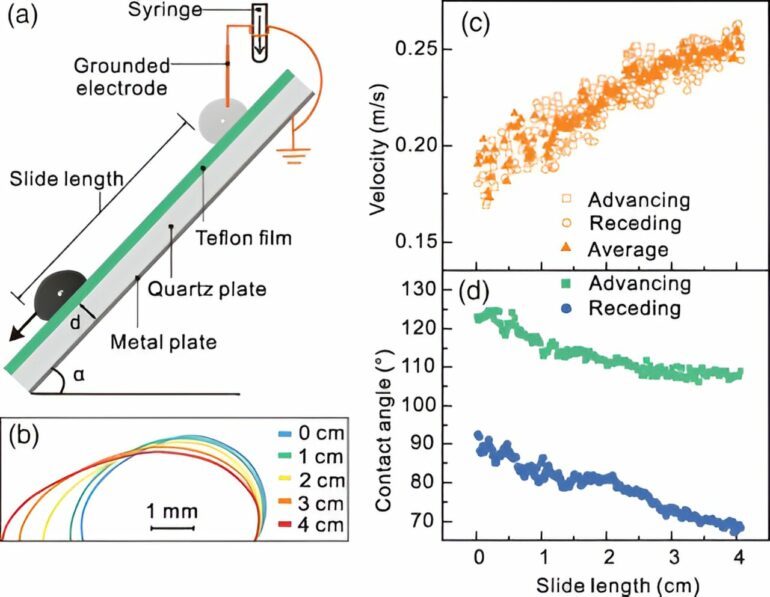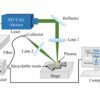From precise inkjet printing to clear vision through spectacle lenses—the influence of droplets and their movement shapes numerous areas of our daily lives. While droplets should remain precisely in place on inkjet prints, it is desirable that they move quickly across the surface of spectacle lenses. Research into wetting processes, therefore, plays a crucial role in further improving technological applications.
The interaction between liquids and surfaces depends not only on the properties of the surface but also on the properties of the liquid. However, a research project initiated at the Max Planck Institute for Polymer Research (MPI-P) has focused on another dimension in recent years: electrical charges. These play a decisive role in the complex wetting processes.
“In our experiments, we have found that a droplet that slides over a surface can leave a trail of electrical charges behind, which then influences the subsequent droplets,” says Hans-Jürgen Butt, Director of the “Physics at Interfaces” department at the MPI-P.
In a new article now published in the journal Physical Review Letters, Butt and his colleagues have taken a closer look at the effects of this charge trail on droplet properties. If a droplet slides down an inclined plate, as in the experiment they conducted, the droplets form different angles to the plate surface on their front and back sides. The difference between these two angles—the so-called “contact angle hysteresis”—is significantly altered by the presence of a surface charge.
“We worked with different configurations: Once so that the plate and droplet can charge and once so that only the plate can charge,” says Butt, describing the experiment. On the one hand, they were able to show that charges have an influence on the contact angles and therefore also the wetting behavior, but also that the effect occurs regardless of whether the droplets and/or plate are charged.
The researchers’ investigations contribute to the targeted use of charges in applications to manipulate droplet behavior or to reduce undesired effects that occur due to charges in biochemical analysis using microfluids or during condensation in heat exchangers.
More information:
Xiaomei Li et al, Surface Charge Deposition by Moving Drops Reduces Contact Angles, Physical Review Letters (2023). DOI: 10.1103/PhysRevLett.131.228201
Provided by
Max Planck Society
Citation:
Water and electricity: Charge effects can influence flowing droplets (2023, November 29)



